
Generative AI conceptual design tools can create images such as these (made by ENR using Adobe’s Firefly Image 3 tool for demonstration purposes), working from text prompts as broad as “construction,” “cities” and “future.” While major firms such as AECOM, Populous, Stantec, Ramboll and HDR are seriously exploring AI for generating new designs, AI-based tools for checking the work of humans are already in use for design review, accounting and legal compliance.
AI Renderings created with Adobe Firefly by Dylan Schutter/ENR
Billable hours have long been the professional services standard by which architects, engineers, lawyers and accountants all get paid. But What if that effort wasn’t from human toil at all? Artificial Intelligence is already chipping away at the venerable billable hours business model, completing in just minutes or seconds tasks that would take humans hours. As these tools grow more efficient and accurate, many firms are having to reevaluate how they allocate their resources, and project delivery practices may have to evolve as well.
Sometimes it’s as simple as identifying the most tedious part of a job and finding a way to automate it. Document Crunch, an AI startup co-founded by former JE Dunn lead counsel Joshua Levy, is powered by a large language model (LLM) trained to identify and highlight problematic contract terms. Jeff Brannen, Balfour Beatty chief legal officer for its Texas division, says the AI tool is already saving him and his team valuable time.
“The advantage that Document Crunch brings us is it lets an AI come in there and help [project managers and project engineers] identify the things they’re looking for.” Brannen adds this is even more valuable if team members are new to contract review and unsure of where to start. He says while he generally knows where to look in Balfour Beatty’s contracts for common issues, Document Crunch’s first pass is almost as effective. “It’s a beautiful thing: that time savings for the team,” he adds.
Some AI tools are already in use out in the field, such as Trunk Tools’ TrunkText, a mobile-based app that relies on a custom large language model to digest project documents and provide near instant answers to workers in the field asking specific questions about project data. Precogs, from VIATechnik, is an AI tool that predicts problems by comparing a project’s documents and 3D models to similar projects in its dataset.
“How [AI] is going to impact accounting, scheduling, that’s where that’s really interesting, because then you can start to do much more accurate, high-low forecasting of where your business is going to be, and even adjust as you move forward in time,” observes Chris Andrews, a former executive at Autodesk, IBM and MWH Global, who is now chief operating officer at Rendered.ai, a company that makes synthetic data to train AI systems. “Right now, a lot of that stuff is still a finger in the wind, rough estimation, based off linear regression curves and things like that. That [shift] is what’s going to be really interesting,” he says.
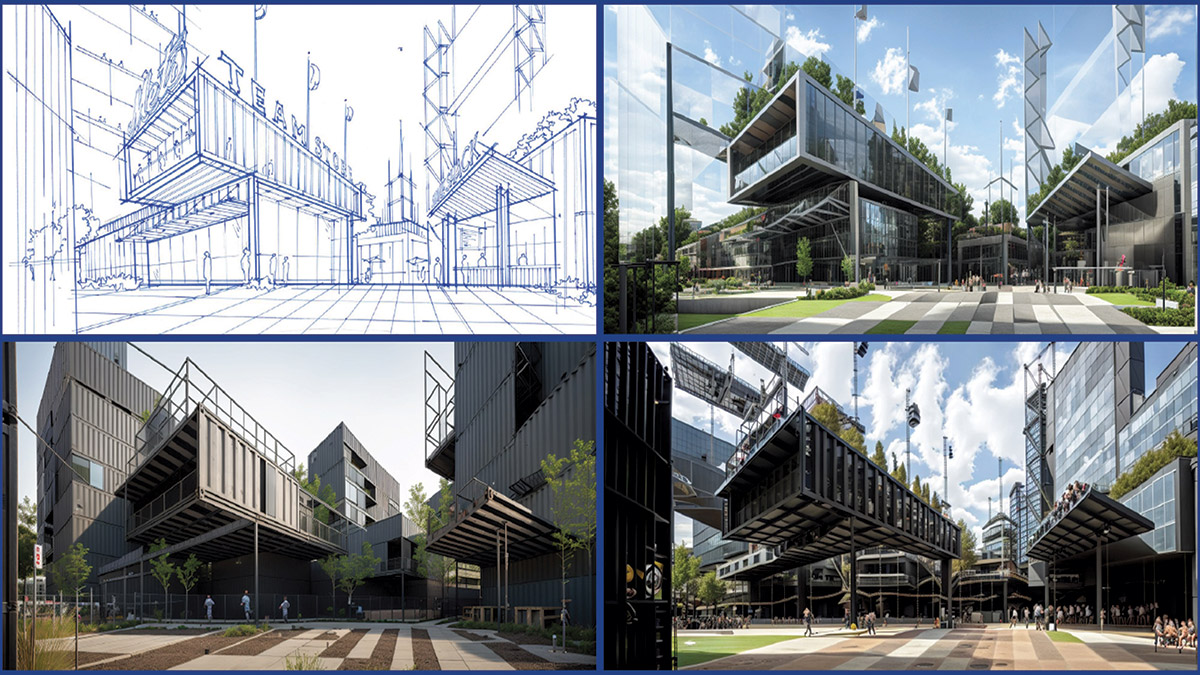
Populous’ conceptual generative tool can produce a conceptual sketch with different design variations, such as interchangable material options for a project’s exterior.
Renderings courtesy of Populous
Time Equals Money
Technology investment has been presented as a time savings to professional services firms since the advent of computer-assisted design. The evolution from CAD to building information modeling (BIM) to digital twins, however, has been fraught with new processes that, while better informed by digital data, have not necessarily translated to massive time savings. Project teams going over Navisworks models, first in computer-aided visual environments and later in cloud-connected online meetings using virtual walk-through tools such as the Wild, have simply added model coordination as another step in the design validation process.
Many of the construction technologists and technology executives serving the construction market said that the opportunity presented by AI should be used to rethink processes the industry has come to rely on and not just recreate existing workflows with added AI assistance.
“So many of the processes customers rely on are just that, processes, and there may be better ways to do them,” notes Aaron Harris, global chief technology officer at Sage, who is shepherding Sage’s Copilot, an AI-powered accounting assistant due to launch this year. He says tools focused on bidding, estimating and other accounting-related roles deserve a closer look.
Chicago-based design and construction consultant VIAtechnik has been developing Precogs, which can review project documents and models and then offer predictions of a range of problems, from overall constructability to site suitability, working from a LLM trained on previous project data. Danielle Dy Buncio, VIAtechnik’s CEO, says AI offers an opportunity to develop better ways of working. “I think that a lot of the industry is focused on efficiency of current processes, facilitated by technology—AI in particular—versus what AI really offers, which is so game-changing that you can completely rethink the process,” she says.
Dy Buncio says the transformation the industry is undergoing shouldn’t just be about how do you answer advice faster, it should be about going back to the root of why something like a request for information was created in the first place.
“There’s something in the design documents that you don’t understand, potentially can’t be built,” she explains. “There’s a conflict, some sort of issue. So you take a problem in the design documents, and you write an RFI, and someone answers it. [But] there’s only so much benefit you get from increasing the speed of answering the RFI.”
Other predictive problem-solving tools, such as Doxel, use AI and machine learning similar to Precogs, all working towards the same objective—informing future projects with past lessons once held as proprietary institutional knowledge by contractors, estimators and designers. The manufacturing sector has already largely accepted this transformation, setting up systems where manufacturers and suppliers use the same cloud-based software to handle orders and conduct business, while protecting intellectual property.
Populous’ conceptual tool, based on Stable Diffusion, can generate renderings of a project based off of text inputs and preset parameters describing the general features of the stadium, its elevation and orientation, even conditions during different seasons.
Experimental Renderings courtesy of Populous
Netflix vs. Blockbuster
Kumar Parakala, president of AEC consultant GHD Digital and the former managing partner of KPMG’s Europe, Middle East and Africa business, says legacy business models need to be reconsidered as the larger digital transformation takes hold in construction. “In 2010, we realized that digital technologies combined with innovation are changing the way businesses operate,” he says. “We have these new business models such as Amazon, Uber, Netflix. This was not an incremental change to existing businesses. It was not a plan to change the existing model. It was completely starting something new, delivering the same outcomes faster, cheaper, adding a much more flexible model to the consumers. That defines the power of digital,” he says.
Bill Mandara, CEO and studio leader of architect Mancini Duffy in New York, is already using generative AI tools in the firm’s conceptual design work. “What AI can do is you can put [earlier designs] in there and generate images similar to this or similar to that,[a version] that might have a darker feel, or what have you. All of that is quite useful to the process as an assist to the designer, certainly not as a replacement, though,” he says.
A service Mancini Duffy now offers to its clients is construction administration, where the firm sells its expertise on a set monthly fee, much like a subscription model seen in other industries. “We pitch a certain amount of money every month, and we propose it as an hourly service and it’s with a monthly fee set. Then it’s fair for everybody,” says Mandara.
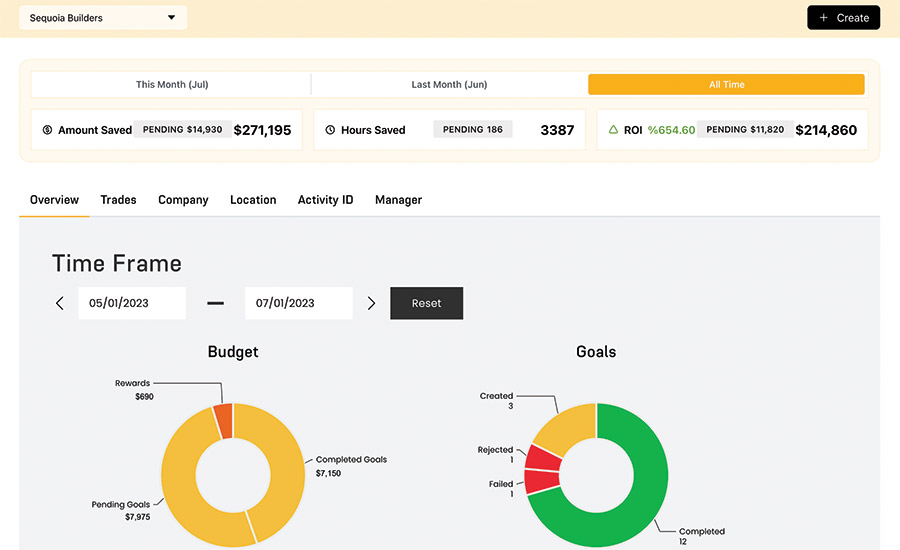
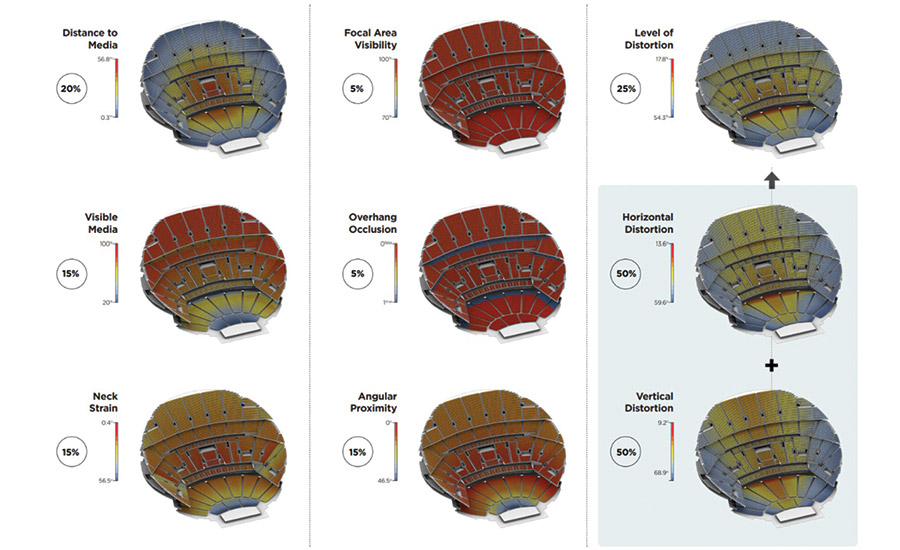
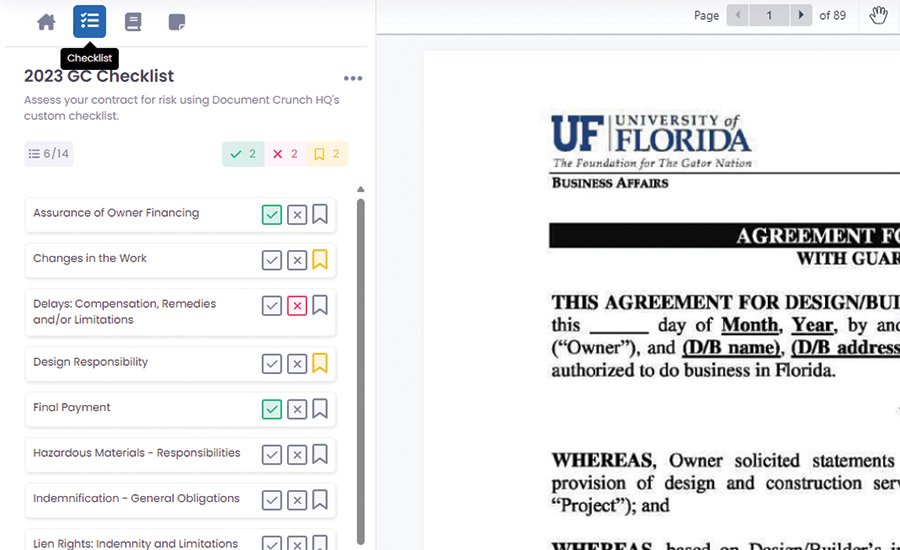
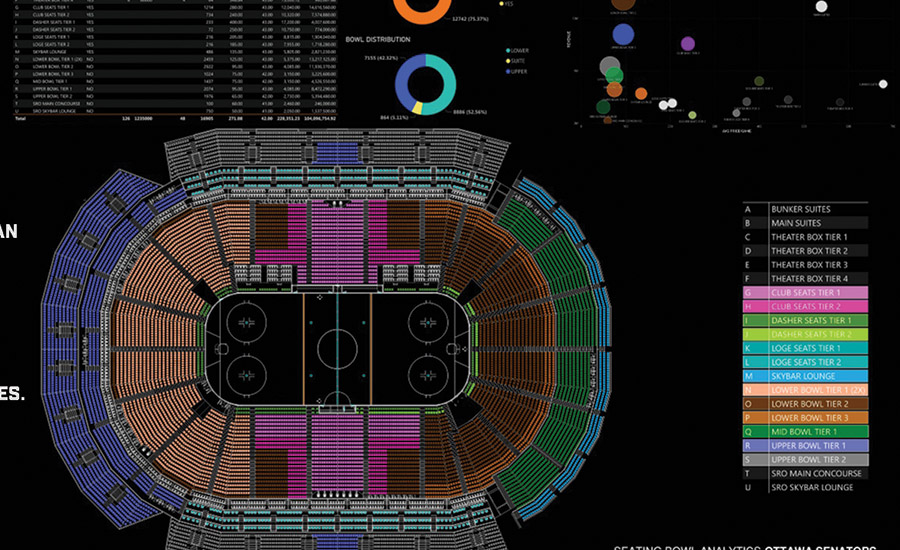
Trunk Tools’ AI-based labor incentives platform (top left) offers cash incentives to subcontractors for keeping projects on the critical path. Document Crunch’s AI tool (bottom left) highlights contract concerns. Populous’ seating bowl generative tool (above) draws on decades of expertise to produce arena designs for clients to consider.
Screenshots courtesy of Populous, Trunk Tools and Document Crunch
Generative AI: Reining in the Overeager Intern
Large design firms, including HDR, Stantec and Populous, have been experimenting with generative AI primarily using their own previous projects as training data. They’ve dabbled with the outputs of popular, publicly available generative AIs such as Midjourney, DAll-E 2 and LookX.
Speaking at BST Global’s AI Summit in Clearwater Beach, Fla., last month, HDR Chief Technology Officer Justin Webster said: “I’ve heard the generative capabilities of these tools being described like an overeager intern, and something that we’ve talked about in HDR, we say, these tools were meant to respond to you, they’re built for that. That doesn’t mean they’re always right. That doesn’t mean that they’re always citing their sources. It means that it’s on you to verify outputs, and use them responsibly.”
Webster then showed the audience some images generated by typing “Overeager Young Male Office Intern,” into a generative AI image creation tool.
Populous’ experiments in generative AI are mostly shadowing real projects using existing processes, trying to find where the value is in it. “It started off with us building our own web-based tool, internally, using [the generative AI tool] Stable Diffusion,” says Jonathan Nelson, global head of design at Populous and based in its Brisbane, Australia, office. “There’s a web framework you can get called Automatic 1111, which is like an easy button on top of Stable Diffusion. We built that internally first.”
Nelson says that when refining the models it put into its internal AI tool, they had to be cognizant of biased results, so that outputs didn’t automatically look too much like previous Populous designs. “You can start to go into an echo chamber really quickly. We tried hard to stay away from that by opening it up to more variation in the designs it was trained on,” he adds.
Populous’ wealth of in-house data is still the main input that informs its future designs. Seating bowl designs for stadiums are one area where work hours could be cut down. Populous’ clients spend billions of dollars trying to get their customer experience right.
Using data to show clients variations of what seating arrangements can be built early on in the process could assuage many of their concerns about design selection.
“We want to make sure that we can take that data and actually show them that we thought about this and that, it’s a bold design and not a straightforward proposition—that always helps,” he says.
Populous’ seating bowl generation tool ingests high-quality data from the firm’s past designs and can offer multiple design options and iterations.
Variations for client needs such as placement of vending areas, concourse design and the numbers of seats and suites for spectators can be specified in the generation tool. Nelson cautions that these tools are still experimental, but offer outputs that are fairly close to conceptual designs already offered to clients.
“If you’re not using our bowl tool, it can take a day to a day and a half to get another option for a bowl,” Nelson says. “That’s for a good experienced bowl designer. It’s a skill maybe 30 people have; it’s a dark art.”
Populous has also developed a tool to generate meshes for conceptual design and rendering models that significantly speeds up the conceptual design process, generating variations of renderings the firm might need to show to a client such as a fan’s view, a sketch view, or an interior or exterior view of a concept.
By using Populous’ high-quality data, the specific, evolving requests of a client can be quickly iterated upon. “They’ll tell you what kind of qualities they want: do they want it to be intimate, or do they want it to be imposing or do they want it to be loud or whatever?” Nelson says. “We’re doing the Buffalo Bills stadium and we took them to Tottenham Stadium in London that we designed, because that’s a that’s an amazing bowl and an amazing place.... It’s basically the same idea: You take them to a game.”
ENR Tries Out AI Image Generation, with Mixed Results
ENR Junior Art Director Dylan Schutter used Firefly Image 3 to make some of the AI-generated images used in this article. “We went back and forth on some of the well-known ones like Midjourney and DALL-E 2; however, we opted to use Firefly since we already work so heavily with Adobe’s software,” he says. Schutter adds that as with any image-generation service, a user must expect the AI to produce imperfect results. For this ENR experiment “we chose to go with a web-based image generator, which allows us to set one image as a reference or style and have it hit a little bit closer to the mark. If you were to run Stable Diffusion on a local system, you could train it on a large set of images, and it will produce higher-quality results,” he says. In roughly 20 minutes, ENR had 60 images generated, 10 of which Schutter deemed usable for illustrations.
Technology and Process
Data collection to inform AI used by large contractors and members of the Big Firm Roundtable is already happening today. Although data governance is still a priority, use of data standards and AI can help contractors and designers sift through larger, messier amounts of project data.
“We’re overcoming a lot of those challenges. I think now is the mindset shift: How do we really use it to tackle efficiency?” asks Dy Buncio.
VIATechnik has been developing a new project workflow it calls digital construction operations. It starts by taking in design documents at an early stage of the project and uses Precogs to surface problems and discrepancies in the design as it goes through the normal process of building a project BIM, so clients receive a truly constructible set of deliverables.
“The idea [is] that the people in the field, the people on the shop floor, get exactly the information they need to build, when they need to build it, versus solving those problems later in the cycle—you solve them through the BIM process,” adds Dy Buncio.
Major vendors of construction technology are also committed to developing new processes to inform construction. Kris Lengieza, construction technology evangelist at Procore, believes AI will be applied more and more to routine processes of construction such as estimating, bidding and scheduling. This will be not only because generative AI is getting better at performing tasks, but also due to shifts in the workforce and the continuing scarcity of skilled labor.
An experiment at Populous explores designs by using text to create a continuous description of a design that an AI then converts to an image that has neural radiance fields applied to it, converting a 2D image into a 3D mesh. That mesh is further refined and optimized to create a detailed 3D architectural rendering.
Illustration by Scott Hilling/ENR
“We’re going to see the automation of a lot of what I like to call busy work, or non-value-add work,” says Lengieza. “And what I mean by that is: It’s the things that you have to do in order to [then] go and do the thinking and [decision-making] on a project.”
Lengieza, who was an executive at contractors Stiles and Weitz before joining Procore, says estimating is a great example of this kind of activity. “We don’t pay estimators a lot of money to go and count toilets on a set of plans. What we pay them for is to look at the entire plumbing package, figure out how they’re going to phase it, go on and price it to get the best value for the entire package and make sure that we filled in all the gaps of the things that are missing between the spec, the notes and the plans. That’s their value.”
He believes introducing more uses for AI will unlock what machines are traditionally good at—repetitive tasks that can be automated. Project managers, engineers and executives will then be freed up to spend more time on activities that add value.
“Let’s look at a set of specifications. Let’s automatically extract all of the submittals that are necessary for this, that used to be the first job you had as a project engineer, to go through there and highlight the specification, and then build this middle state. We can automate that process,” he adds.
Lengieza says Procore will remain a supporter of digitization of site data and wants to inform the training and use of AI tools through its products.
“The introduction of large language models and using chat as a conversational interface to construction technology is going to be revolutionary, just like the iPad was when it came to construction,” he says. “The reason is we will not be chained to duplicating paper-based form processes to collect data and to disseminate data to people.”
Lengieza predicts that contractors will soon be able to get more of the data they’re looking for in conversations, the kind that Trunk Text makes possible via mobile phone chat to call up documents, schedules and other data that workers need to know. “You won’t have to go in and manually fill out a form, serial number, model number, delivery date,” he explains. “You’re talking: Hey, it showed up on the jobsite, I scanned the ticket. I’ve already got all that information, and we’ll structure it and put it in a database for you.”
Autodesk is similarly bullish on AI’s ability to transform design and construction and is devoted to reviewing processes. Speaking at its Autodesk University trade show in December 2023, CEO Andrew Anagnost called Forma, the company’s AI-based conceptual tool, “BIM reimagined.” Amy Bunszel, Autodesk executive vice president for AEC, said that in time, Forma will come to encompass the entire BIM process. Anagnost added: “Data is no longer a problem to be managed; [It is] now an opportunity to be tapped. Done badly, AI absolutely leads to bad outcomes, but done well? It has the capacity to address the challenges of doing more with less. AI can make your work more meaningful.”
For the latest developments in AI and construction, be sure to attend ENR FutureTech, held June 3-5 in San Diego. Visit www.enr.com/future-tech for more information.


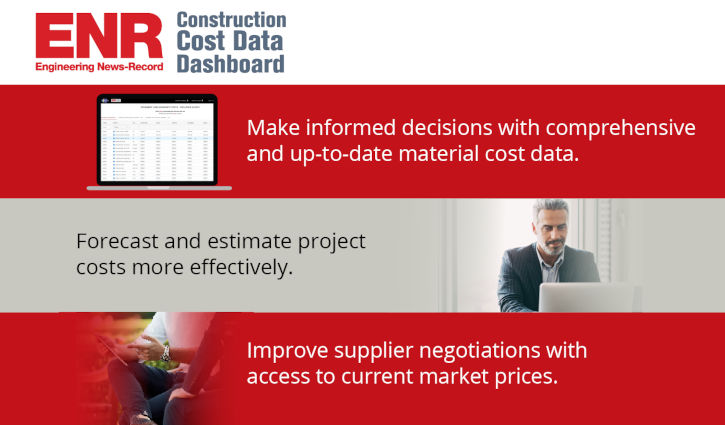





_ENRready.jpg?1715270798)
_ENRready.jpg?1715270783)



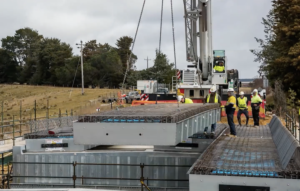


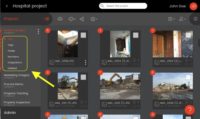
Post a comment to this article
Report Abusive Comment